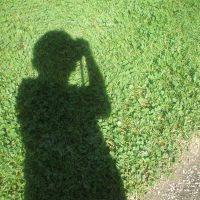Fiddleheads Winter Series

Avoid cabin fever and explore the Arboretum this winter! Learn about dinosaurs, science, turtles and more in our all new winter Parent/Child Classes.
Read moreDecember Color Appears at the Washington Park Arboretum (Part II)
1) Abies balsamea (Balsam fir)
Pitch from almost every conifer is used to seal and protect wood.
“Canada Balsam” from the Balsam Fir is used to cement together the lens elements in optical equipment and to mount specimens for microscopy.
It is North America’s most popular Christmas tree, but only newly planted in the Arboretum in grid 42-4W.
Native to eastern North America
2) Cedrus libani (Cedar of Lebanon)
“Cedar oil” is distilled from several conifers, mostly not Cedrus, the “true cedar”.
Read moreDecember Color Appears at the Washington Park Arboretum
“Berry Best from Hollywood”
1) Ilex aquifolium ‘Ferox Argentea’ (Variegated Porcupine Holly)
This “Punk” star is a sterile male with spiny leaves, but obviously no berries.
But this means it doesn’t contribute to English holly’s invasiveness in the Pacific Northwest.
Old cultivar in England, first reported in 1662 (Galle).
Specimen is located in the Eurasian clade (family), W. berm, of the Ilex Collection.
November Color Appears at the Washington Park Arboretum (Part II)
Got Greens?
1) Fokienia hodginsii (Fokienia)
Native to China, Vietnam, and Laos
Extremely slow growing outside of native range
Specimen located in Rhododendron Glen
2) Keteleeria evelyniana (Keteleeria)
Native to China, Vietnam, and Laos
Thrives in warm climates, but may be considered an “herbaceous perennial” in northern climates
Specimen located in north Pinetum area
3) Taiwania cryptomerioides (Coffin Tree)
Native to Taiwan, China, and Vietnam
Considered “critically threatened” in native range
Specimen located near East Newton Street entrance to the Pinetum area
4) Thujopsis dolabrata (Lizard Tree)
Native to Japan
Thrives in moist, shady areas with rich soil
Specimen located among Acer Collection in the Woodland Garden
5) Torreya taxifolia (Stinking Cedar)
Native to southeastern U.S.
Read moreA Glimpse into the Past – Azalea Way before the Azaleas
This month’s photo was taken by Frederick Leissler, landscape architect to the Seattle Parks Department, labeled as 1938-39. It shows the grading to create Azalea Way.
Read moreNovember Color Appears at the Washington Park Arboretum
1) Arbutus unedo (Strawberry Tree)
One of the many species described by Carl Linnaeus in his 1753 landmark work, Species Plantarum.
An amazing plant with 4-season interest, including fruits and flowers at the same time.
Serves as a bee plant for honey production and the fruits are food for birds.
2) Camellia wabisuki (Wabisuki Camellia)
A Sukiya variety with single, pinkish-white flowers and an open growth habit.
Read moreA Kiwi Botanist in our Mist
The misty October revealed a great surprise to New Zealand horticulturist Kathleen DeMaria while she was installing signs for the new ‘Lookout Loop Trail’ near the recently restored Lookout Gazebo.
Read moreOctober Dispatches From the Fiddleheads Forest School
What is it about the autumn that generates so much nostalgia? A season evoking such emotion somehow always manages to pass in a blur. It marks the end of lackadaisical afternoons and the start of the annual decent into the cooler, more introspective months. The way I see it, fall is the natural steward of the New Year. We begin afresh: in school, in season, in time.
Read moreKids’ Photo Contest Winners!

Kids + Cameras = Some great pictures of the University of Washington Botanic Gardens! Come see the winners of the 2013 Kids Digital Photography Contest!
Read more